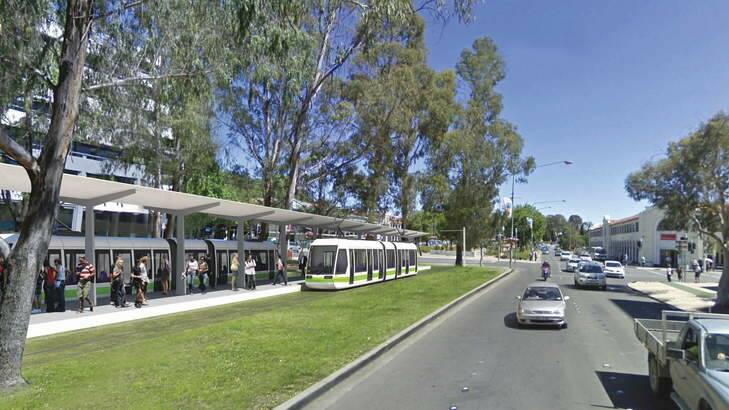Next week, game-changing laws set to drive a bulldozer through parts of the city's planning process are to be fast-tracked through the ACT Legislative Assembly.
Subscribe now for unlimited access.
or signup to continue reading
One remarkable thing among many about this legislation is the equanimity with which the Greens are shepherding through laws that will eliminate the Tree Protection Act and the Heritage Act from a place in major planning projects.

Another is the extent to which the legislation allows the government carte blanche in its chosen big-picture planning projects.
The new laws will allow the government to declare special precincts and major projects, and to fast-track approval in those zones. Not only will heritage and conservation laws be almost eliminated from the equation, appeals to tribunals and courts against decisions on those projects will be abolished in all but very limited circumstances.

The muted response from many in the community is notable. The Liberal opposition has done little more than raise a white flag of protest, possibly indicating either that it likes the idea of the power this confers on a government of the day, or that its years in opposition have limited its capacity to scrutinise with confidence. But to be fair, they're having to work fast.
Attorney-General Simon Corbell introduced the bill in the last session of the ACT Parliament and it is earmarked to be debated and passed as early as Tuesday. He has identified the planned rail line from Gungahlin to the city and the secure mental health unit as two projects for fast-tracking.
But some in the planning and wider community are scratching their heads and wondering just what is in the way of either project - or as yet unnamed projects - that requires such drastic legislation.
Corbell needs the vote of Greens balance-of-power member Shane Rattenbury, who supports the legislation. That a Green should be prepared to hand power to a government to bypass heritage and tree protection legislation looks surprising. But it's not only Rattenbury; the party hasn't objected either.
Again, it has had little time.
Greens convener Sophie Trevitt says she has no comment because she hasn't had a chance to canvass party views.
Rattenbury says the legislation is better than the existing situation where a minister can use "call-in" powers to approve a project to speed up the process and put an end to objections.
He accepts the government's argument that the new planning laws are more "democratic" and "transparent" because they require a project to be put before the Assembly for "disallowance" - albeit disallowance in a tight timeframe, and by an Assembly in which Labor, with Rattenbury, has a majority.
The call-in powers to which Rattenbury objects do allow appeals, which the new laws do not.
The government points out that projects must be out for public comment, and that comment is sought also from the Conservator of Flora and Fauna and the Heritage Council, but again, the timing for public comments (30 days) is tight.
And there is no mechanism beyond making a comment for the public or the heritage and conservation officers to play a part, since appeals are abolished.
More fundamentally, though, the call-in powers remain in place as well, so Rattenbury's support for the new system on the grounds that it's better than projects being called in is, to an extent, moot.
The government also argues it can always legislate to push special projects through, and at least this way it is setting up a framework for announcing special projects and consulting on them.
And yes, it can. It can legislate to abolish any number of long-held processes and conventions; whether that is an argument it should is another matter.
Rattenbury's support for this legislation is presumably boosted by its application to Capital Metro.
The light rail line will be built down Flemington Road and Northbourne Avenue, with clear heritage issues in play. The Heritage Council is considering nominations for buildings each side of Northbourne Avenue, but they look set to be caught up in a special precinct declaration over the area once this legislation is passed. While existing heritage buildings and existing declared trees will still be protected, no new nominations can proceed once a special precinct has been declared.
The median strip on Northbourne Avenue looks set to be drastically reduced in width to allow traffic lanes to be moved closer to the centre. And government-owned buildings in the strip, including the visitor centre, the motor registry and Macarthur House are also part of Treasurer Andrew Barr's thinking as he identifies property that can be sold in the national garage sale of assets sparked by Treasurer Joe Hockey's promise of a 15 per cent bonus for state assets sell-offs.
As for conservation issues or significant trees, no information has come to light to indicate what might be in the way of the Capital Metro project or the secure mental health unit, or other significant projects that the government might have in mind.
The Planning Institute has raised concerns about the new laws, in particular the way they shift planning into the political arena and remove an important separation between politicians and developers.
Corruption inquiries in NSW are a graphic warning about what can go wrong when ministers get too close to the planning approvals process.
The Heritage Council has raised concerns about the Northbourne Avenue precinct and is watching closely, and the Conservation Council said in a short statement on Thursday it hadn't had a chance to look at the detail of the bill but did not want "any diminishment of existing provision to protect environment and heritage values". That's pretty much the extent of the red flags raised over a far-reaching legislation set to become law.
As one former government source commented, it is as though the city has gone to sleep.

